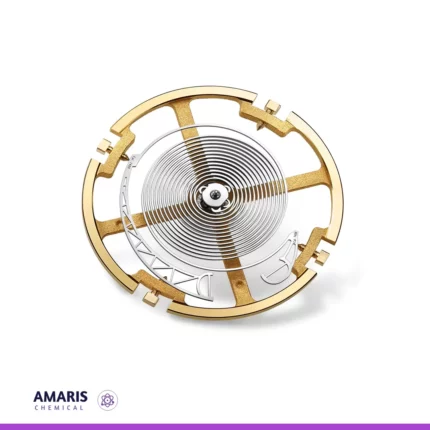“blow pipes” has been added to your cart. View cart
Back to products


Gas Burner Portable
$1,500.00 Original price was: $1,500.00.$1,400.00Current price is: $1,400.00.
Galvanometer Zero Centre
$6,500.00 Original price was: $6,500.00.$6,400.00Current price is: $6,400.00.
Whatsapp Order
A zero-center galvanometer, also known as a center-zero galvanometer, is a type of measuring instrument used to detect and indicate small electric currents. Unlike a standard galvanometer, which measures current from zero to a maximum value in one direction, a zero-center galvanometer measures current deviations in both directions from a central zero point.
SKU:
ACS18755CHEM0
Category: LABORATORY EQUIPMENT & APPARATUS
Description
Table of Contents
ToggleUses of Galvanometer Zero Centre
1. Bridge Circuits
Wheatstone Bridge:
- Used to measure unknown resistances.
- The zero-center galvanometer detects the null point (zero current) when the bridge is balanced.
- Provides high precision by indicating even the smallest imbalance in the bridge circuit.
AC Bridge Circuits:
- Used for measuring inductance, capacitance, and impedance.
- The galvanometer helps find the balance point in the bridge, ensuring accurate measurements.
2. Null Measurements
Potentiometric Measurements:
- Used in potentiometers to measure voltage by balancing it against a known reference voltage.
- The galvanometer indicates zero current when the voltages are equal, providing a precise measurement.
3. Polarity and Current Direction Detection
Circuit Testing:
- Used to determine the direction of current flow in a circuit.
- Helps in troubleshooting and verifying the operation of electrical components and circuits.
4. Differential Measurements
Comparative Measurements:
- Used to compare two voltages or currents.
- The zero-center feature allows for easy detection of differences, even if they are very small.
5. Calibration and Testing
Instrument Calibration:
- Used to calibrate other measurement instruments by providing a precise zero reference point.
- Ensures that other instruments are correctly balanced and accurate.
6. Magnetic Field Experiments
Hall Effect Experiments:
- Used to measure the voltage generated by the Hall effect in semiconductors.
- The galvanometer can detect small voltage changes, providing data on the magnetic field strength.
7. Electrochemical Measurements
Galvanic Cells:
- Used to measure the small currents produced by galvanic cells.
- Helps in studying electrochemical reactions and properties.
8. Precision Balancing
Balancing High-Precision Circuits:
- Essential for experiments requiring exact balance, such as precision amplifiers or oscillators.
- Indicates minute imbalances to achieve optimal performance.
9. Educational Demonstrations
Teaching Tool:
- Demonstrates principles of current, voltage, and resistance in educational settings.
- Provides a visual and intuitive understanding of electrical concepts.
Related products
Atomic Model Set
$0.01
A lab atomic model set is a collection of physical models and materials designed to represent the structure of atoms and molecules. It is commonly used in educational and scientific laboratory settings to visually demonstrate the arrangement of protons, neutrons, and electrons within an atom, as well as the bonding patterns between atoms in molecules. These sets typically include colored balls of various sizes representing different types of atoms, as well as connectors or magnets to simulate chemical bonds between them. The purpose of these sets is to help students and researchers better understand the principles of atomic and molecular structure in a tangible and interactive way.
Balance Bathroom Scale
$0.01
balance spring
$0.01
bare enamelled copper wire
$0.01
Beaker Plastic
$0.01
A plastic beaker is a laboratory container made from plastic material, typically featuring a cylindrical shape with a flat bottom and a spout or pouring lip. It is used for holding, measuring, and mixing liquids or substances during various scientific experiments, research, or educational activities. Plastic beakers come in a range of sizes and are designed to withstand various chemicals and temperatures, making them versatile tools in laboratory settings.
Bernoulli Tube Apparatus
$0.01
The Bernoulli tube apparatus, also known as a Venturi tube apparatus, is a scientific device used to demonstrate the principles of fluid dynamics, particularly the Bernoulli's principle. It consists of a specially shaped tube with a constricted region, often referred to as a Venturi section. When fluid (liquid or gas) flows through the tube, the constricted section leads to changes in pressure and velocity according to Bernoulli's principle, which states that as the velocity of a fluid increases, its pressure decreases and vice versa. This apparatus is commonly used in educational settings to visually illustrate how the flow of a fluid can affect its pressure, helping to explain various phenomena like lift in aircraft wings, fluid flow through pipes, and more.


 Emollients
Emollients Humectants
Humectants UV Filters
UV Filters Surfactants (cosmetic)
Surfactants (cosmetic) Preservatives (cosmetic)
Preservatives (cosmetic) Fragrances and Essential Oils
Fragrances and Essential Oils Antioxidants (cosmetics)
Antioxidants (cosmetics)
 Solvents (lab)
Solvents (lab) Chromatography Chemicals
Chromatography Chemicals Microbiology and Cell Culture Reagents
Microbiology and Cell Culture Reagents Biochemical Reagents
Biochemical Reagents Inorganic and Organic Standards
Inorganic and Organic Standards LABORATORY EQUIPMENT & APPARATUS
LABORATORY EQUIPMENT & APPARATUS Spectroscopy Reagents
Spectroscopy Reagents Molecular Biology Reagents
Molecular Biology Reagents
 Precious Metal Extraction Agents
Precious Metal Extraction Agents

 Fertilizers
Fertilizers Plant Growth Regulators
Plant Growth Regulators Soil Conditioners
Soil Conditioners Animal Feed Additives
Animal Feed Additives Biostimulants
Biostimulants
 Dough Conditioners
Dough Conditioners Flour Treatments
Flour Treatments Fat Replacers
Fat Replacers Preservatives (baking)
Preservatives (baking)
 Surfactants (cleaning)
Surfactants (cleaning) Builders
Builders Bleaching Agents
Bleaching Agents Enzymes
Enzymes Solvents (cleaning)
Solvents (cleaning) Fragrances
Fragrances Disinfectant
Disinfectant Metal cleaning
Metal cleaning

 Sealants and Adhesives
Sealants and Adhesives
 Biodegradable Surfactants
Biodegradable Surfactants Bio-based Solvents
Bio-based Solvents Renewable Polymers
Renewable Polymers Carbon Capture Chemicals
Carbon Capture Chemicals Wastewater Treatment Chemicals
Wastewater Treatment Chemicals
 Preservatives (food)
Preservatives (food) Flavor Enhancers
Flavor Enhancers Acidulants
Acidulants Sweeteners
Sweeteners Emulsifiers
Emulsifiers Antioxidants (food)
Antioxidants (food) Colorants (food)
Colorants (food) Nutrient Supplements
Nutrient Supplements Nutraceutical Ingredients
Nutraceutical Ingredients
 Fresh Herbs
Fresh Herbs Whole Spices
Whole Spices Ground Spices
Ground Spices Spice Blends
Spice Blends
 Surfactants(oil)
Surfactants(oil)

 Automotive chemicals
Automotive chemicals Pyrotechnic Chemicals
Pyrotechnic Chemicals
























